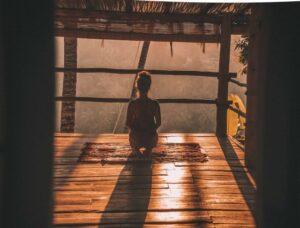California is a beautiful state with some of the best camping sites in the U.S. due to the variety of terrain at each location. From beach camping to mountain camping and everything in between, you will find a place that suits your needs and expectations.

Some of these places are free, while others have varying fees depending on the location or time of year. You can also expect different crowds depending on where you go and when. For example, Yosemite National Park has over four million visitors per year!
To help you decide which of these locations is best for your next trip, we’ve compiled a list that includes details about each one.
Yosemite National Park
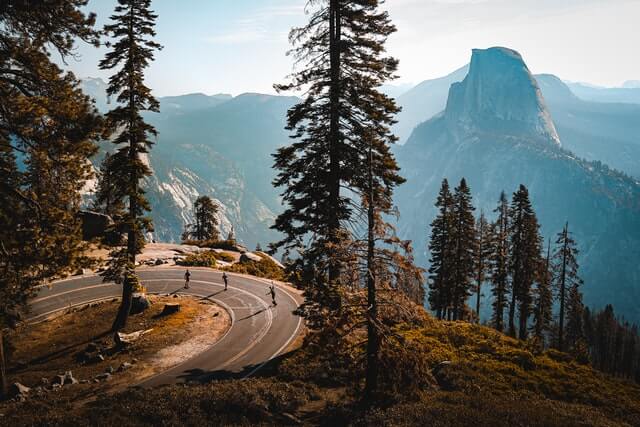
Yosemite National Park has world-renowned sights, such as Half Dome and Yosemite Falls. But there is much more to explore: high mountain meadows filled with wildflowers, deep valleys carved by glaciers, ancient giant sequoias, and beautiful lakes and rivers. There are also numerous campsites, including Upper Pines, Wawona, Lower Pines, Camp 4, etc. Pricing ranges dependent on the park that you are staying at.
The park is a hiker’s paradise with over 800 miles of marked trails that range from flat and paved paths to steep mountain trails. There is also two horseback riding stables in the park. Also, Yosemite offers climbing opportunities for all abilities and 14 miles of paved bicycle trails (bikes can be rented), and several dirt roads for mountain bikers. In addition, there are guided raft trips on the Merced River from late May through early September.
Tuolumne Meadows Campground
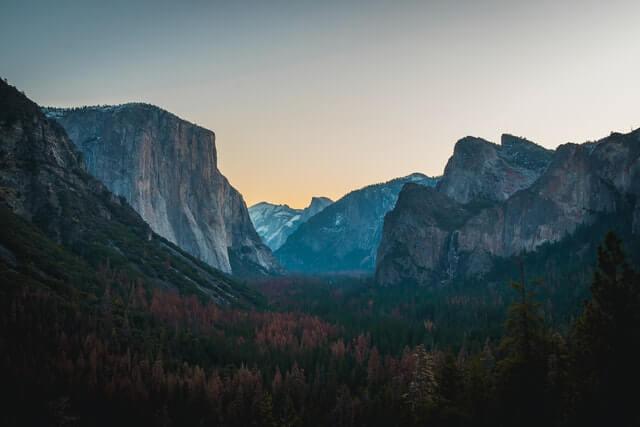
Important: Tuolumne Meadows Campground is closed until 2025 due to a rehabilitation project.
Get ready to explore the best of Yosemite’s high country! Tuolumne Meadows Campground is located in Tuolumne Meadows, a large subalpine meadow surrounded by mountain peaks. The campground is situated along the Tuolumne River at 8,600 feet (2,600 m) elevation and offers nearly 300 campsites. Most sites can accommodate RVs and trailers up to 35 feet in length without hookups. Prices start at $26/night.
The campground opens seasonally in mid-July and closes in late September when Tioga Road (Highway 120 through the park) approaches for the season. As snowmelt increases throughout the summer, water levels in rivers also increase. Therefore, if you’re visiting Tuolumne Meadows Campground during the spring or early summer months, you may not be able to access some campsites due to high waters. High water levels may also make it hard to find a suitable place for putting in a kayak or canoe.
The campground has flush toilets and drinking water available from spigots. The nearby Tuolumne Meadows Visitor Center has exhibits about the area and rangers on duty who can answer your questions about Yosemite National Park.
Campground website: here.
White Tank Campground in the Joshua Tree National Park
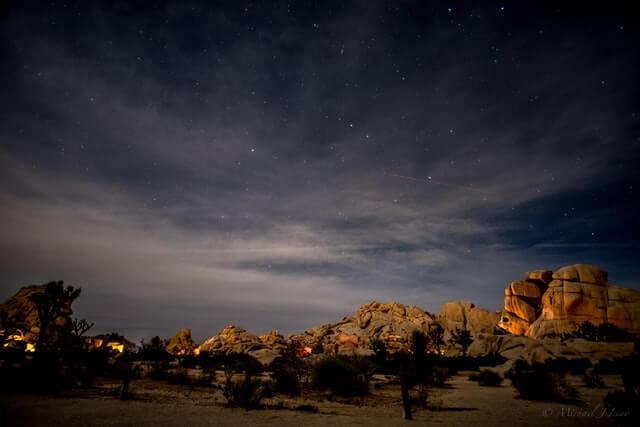
The Meadows Campground sits on the edge of the Mojave Desert and the Lower Colorado River Valley. The campground is in a wide-open area surrounded by granite boulders and Joshua trees, a bizarre-looking tree native to the Mojave Desert. Most activities are accessed via car; there are no trails within the campground, but many trails and adventure areas can be reached by car easily.
The White Tank Campground is located at the end of Pinto Basin Road, a 40-mile drive from the West Entrance Station and 34 miles from the North Entrance Station (the campground is also accessible from the South Entrance). The campground is typically open year-round, but it can close seasonally due to snow or extreme weather. There are 15 spots in total — half of them with electric hookups for an additional $15 per night. There are pit toilets and no water access, so bring your potable water or plan to filter or treat water from Indian Canyon before drinking it. This is first-come, first-served so try to arrive at least an hour before sunset to secure a spot.
Point Reyes National Seashore
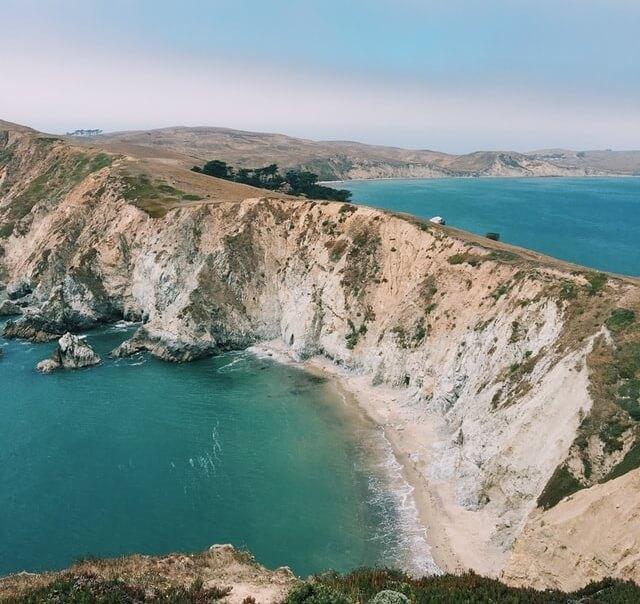
Point Reyes National Seashore is the only national park within the borders of Marin County, California. Created in 1962, it’s a popular spot for all activities, including camping and hiking. Point Reyes National Seashore is one of the most popular national parks in the nation and offers a rich array of places to stay on your visit. We suggest that you plan for your trip, especially if you plan to camp—campsites fill quickly.
The park has two separate campgrounds: Wildcat Campground and Coast Campground. Both are open year-round, but reservations are required from May 1 to September 30. It costs $30/night/site for 1 to 6 people, $60/night/site for 7 to 14 people, and $90/night/site for 15 to 25 people.
Lake Tahoe

Lake Tahoe is a popular spot for RV campers, but there are so many campgrounds that visitors with a camping tent can find plenty of space to pitch their tents.
Lake Tahoe is located in the Sierra Nevada mountain range, where you can find hiking, biking, and skiing activities. There are also several beaches at Lake Tahoe, where you can go swimming or fishing for lake trout, kokanee salmon, or Mackinaw trout.
Whether you want to spend your days hiking or skiing or just relaxing by the lake, Lake Tahoe is an excellent destination for camping tents.
Redwood National And State Park
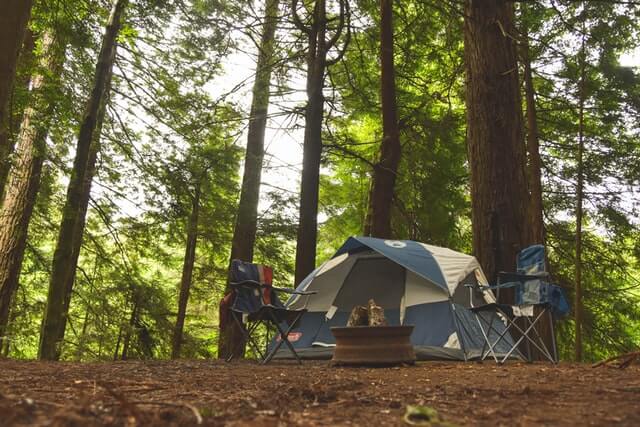
Visitors to the Redwood National and State Parks are likely attracted by the old-growth forests and stunning natural beauty. The park is a prime spot for hiking and camping, but there’s a lot more you can do here. The Redwood National Park makes up one of the world’s largest expanses of protected old-growth coast redwood forest. The park was established in 1968 to preserve the redwood ecosystem from logging; it has been added to several times.
Camping is a popular activity at this park, although you’ll need to make your reservations ahead of time to guarantee a spot. There are over 200 family campsites available throughout four campgrounds: Elk Prairie, Gold Bluffs Beach, Mill Creek, and Jedediah Smith. Camps are equipped with picnic tables, fire rings, and bear boxes.
Algoma Campground in Shasta Trinity National Forest
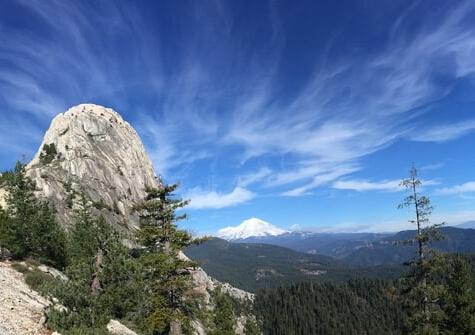
To get there, take SR 89 east from the McCloud Ranger Station for 13 miles. Then, turn right for Algoma (Stouts Meadow) and drive another mile until you arrive at the campground. The turnoff has a cross-country skier sign at the entrance.
The Upper Portion of the McCloud River is one of Northern California’s hidden gems. It is popular among fly fishers because it’s home to native rainbow trout. The river originates from Lake Siskiyou, located just south of Mt. Shasta, and flows down into the Pit River arm of Shasta Lake.
Algoma Campground is situated about 13 miles east of McCloud and is a perfect base camp for exploring the Shasta-Trinity National Forest. The campsite is free to campers.
Ventana Campground
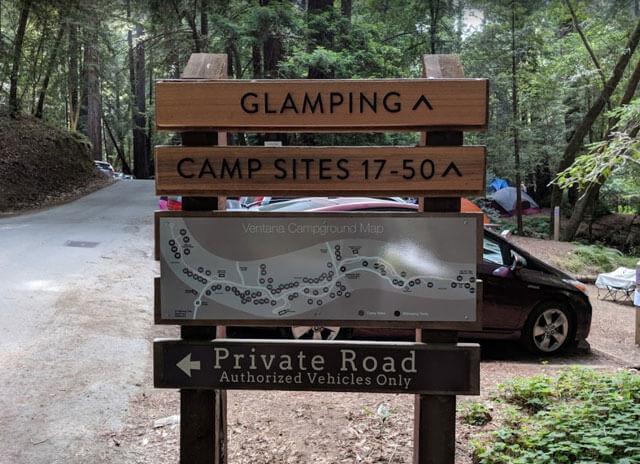
Ventana Campground has 82 campsites that can accommodate 2-6 people each (please see our Rates page). They cannot accommodate RV, travel trailers, motor homes, or pop-up tent trailers. All sites are set back from the highway for your privacy and quiet enjoyment. The camping area is shaded by the old-growth redwood trees that thrive here in Big Sur. At night the dark skies display the Milky Way from horizon to horizon. You can hear tumbling creeks in the distance as you fall asleep under a canopy of stars.
Camping costs vary by season. In-season rates are $45 per night. The off-season is $40 per night. In addition, there is a $7 reservation fee per site, which is non-refundable. All campers must check-in at the office upon arrival and pay any fees due incomplete. Ventana is a partner to Hyatt Hotels, and booking is handled through the Hyatt site.
Channel Islands National Park

Imagine that you are on a remote archipelago 60 miles off the coast, with more than 295 species of plants and animals found nowhere else. This is the Channel Islands.
Located just off the coast of Southern California, the Channel Islands are a world apart from the mainland. Channel Islands National Park has five islands, each with its unique character. You can reach them by boat or plane, but only three are open to the public. Anacapa Island is the smallest and closest of the Channel Islands. The island is famous for its sea caves, dramatic cliffs, historic lighthouse, and a large seabird colony.
Crystal Cove State Park
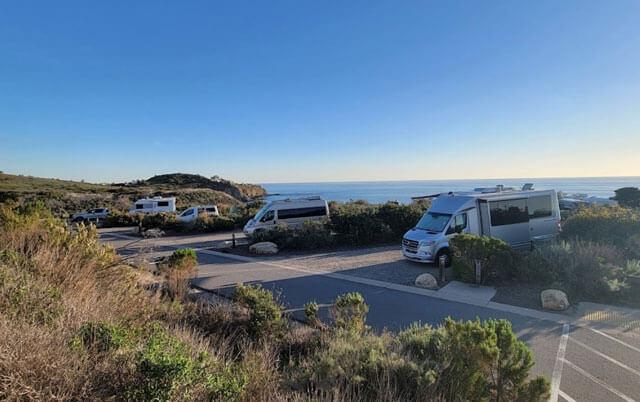
Camping is one of the most popular reasons to visit Crystal Cove, State Park. Located on the northern end of Laguna Beach, there are various camping areas in El Moro Canyon, which is about 3,000 acres. All rooms have restrooms, hot showers, and access to trails that offer hiking and mountain biking opportunities.
The Moro Campground has 53 drive-in sites with water and electricity. The campsites are on a first-come, first-served basis, but you can reserve cottages or tent cabins. This campground is for RVs and tents and has electrical hookups for RVs. It also has a dump station at no charge. You will find drinking water, hot showers, and restrooms nearby. The campground is close to a beach trail that leads to the coast. Most sites are open year-round, but some are closed during winter.
Minaret Falls Campground
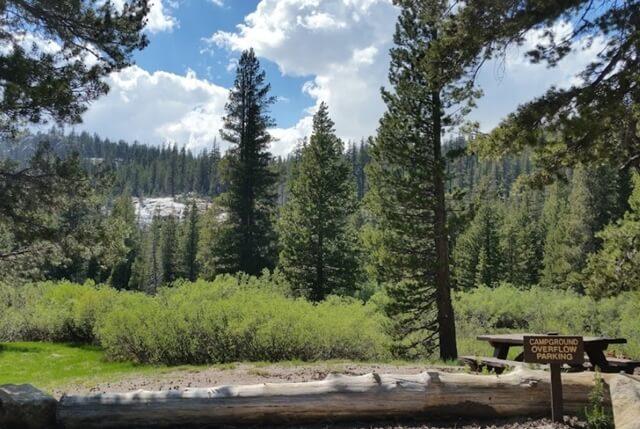
Campers will enjoy a stay in one of the Minaret Falls Campground’s 132 sites, available on a first-come, first-served basis. This campground is open seasonally throughout the summer months. Sites are $23 and include a fire ring, picnic table, and bear box for food storage.
Minaret Falls Campground is located along the San Joaquin River in Mammoth Lakes, California, within walking distance of Devils Postpile National Monument and Red’s Meadow Resort. The campground sits at an elevation of 7,660 feet above sea level, with nearby peaks reaching 11,000 feet. Visitors should come prepared with warm clothing since evenings can be chilly even in the summer.
This campground is a perfect basecamp for day trips into the surrounding wilderness area. Hike to Devil’s Postpile National Monument to see its unique basalt columns or Rainbow Falls and admire the view from high above it all. The Pacific Crest Trail winds through Mammoth Lakes, and hikers can access it from nearby Reds Meadow Resort or Agnew Meadows Campground.
Pinnacles National Park
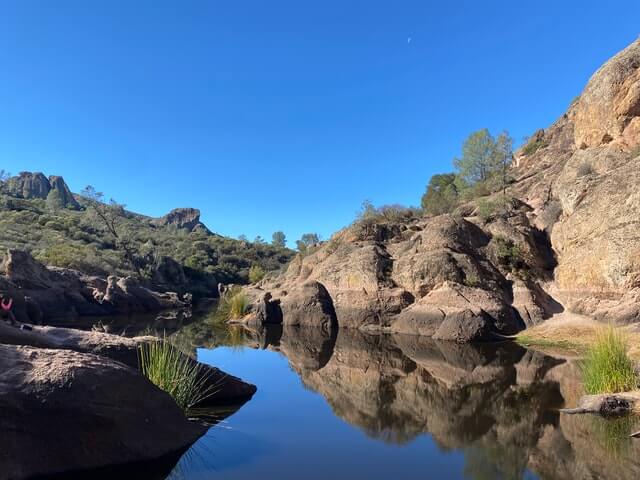
Pinnacles National Park is home to the Pinnacles Campground, located near the park entrance. Visitors can camp in designated sites on a first-come, first-served basis. An additional, smaller campground is situated on the park’s east side.
Camping on both sides of the park is available year-round, with reservations for individual sites accepted from mid-October through mid-April. During the rest of the year, campsites are available on a first-come, first-served basis; there’s a four-night limit during summer (from Friday to Tuesday). Camping fees start at $30 per site per night for up to six people; each additional person is $5 per night (children under 16 camp free). A maximum of 10 people or two vehicles can occupy a single site; only one car can be parked at a campsite overnight.
King’s Canyon & Sequoia National Park
The Sequoia National Forest is one of the most popular campsites in the state, despite its relative proximity to Los Angeles and San Francisco. Many visitors choose to navigate the area with their RV or travel trailer. If you want to get away from the hustle and bustle of city life, this is the perfect place. There are plenty of campgrounds nearby to set up your camping tent and enjoy a slice of seclusion.
This National Forest is famous for its sequoia trees, some of the oldest living trees on Earth. Some of these trees have been alive for over 3,000 years! The best time to see these giant trees is in the springtime when they burst into full bloom with a stunning array of colors and scents that will leave you breathless.
If you would like to explore the Sequoia National Forest without worrying about driving an RV or pitching a tent, there are plenty of rustic cabins available all year round. These cabins are furnished with basic amenities like beds and kitchen equipment to have a comfortable stay even if you’re miles away from civilization.
Tam’s Pantoll Campground in Mill Valley
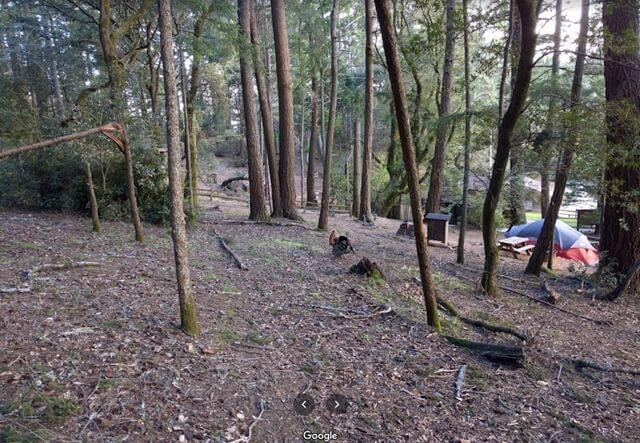
Pantoll Campground is perched on the western slopes of Mount Tamalpais, making it a perfect base camp for exploring the park. It’s just a short drive from San Francisco yet provides an escape from the hustle-and-bustle of city life.
Bike or hike through the park along with one of its many trails, or head to nearby Muir Woods National Monument for more outdoor adventures. After a long day, return to your campsite for rest by your tent or RV.
This campground has 16 sites, each with water and electric hookups. Each location also has a fire pit and bbq grill. There is also a community center with bathrooms and showers. The campground costs $25/night. The campsites are right next to the Steep Ravine and Matt Davis trailheads. Hiking those trails is a great way to spend an afternoon. From Matt Davis, you can hike over to Muir Woods or Stinson Beach (the former will take a few hours).
Alabama Hills in Inyo County
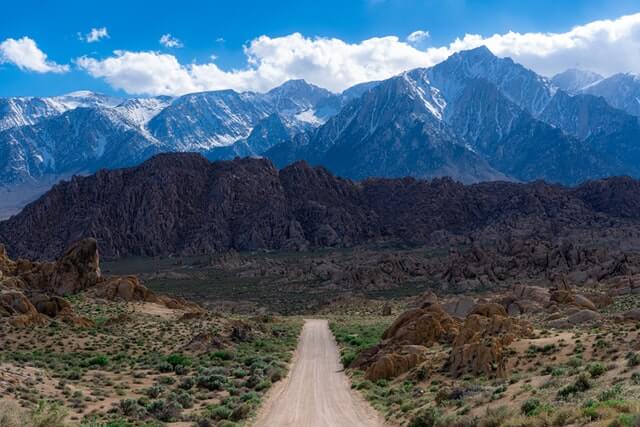
Inyo County’s Alabama Hills are a geological wonderland of rounded rocks, eroded spires, and monoliths set between the jagged peaks of the Sierra Nevada and the Inyo Mountains. The hills were formed when tectonic plates collided 100 million years ago, lifting the Sierra Nevada and Inyo Mountains and creating fault lines that still shape our world today.
The hills are west of Lone Pine, California, just off Highway 395 along Movie Road. The Bureau of Land Management manages the public lands where anyone can visit to enjoy hiking, rock climbing, photography, and exploring natural arches. But, of course, one of the most popular activities is touring film sites featured in over 400 movies and television shows, including such classics as Gunga Din and How the West was Won.

